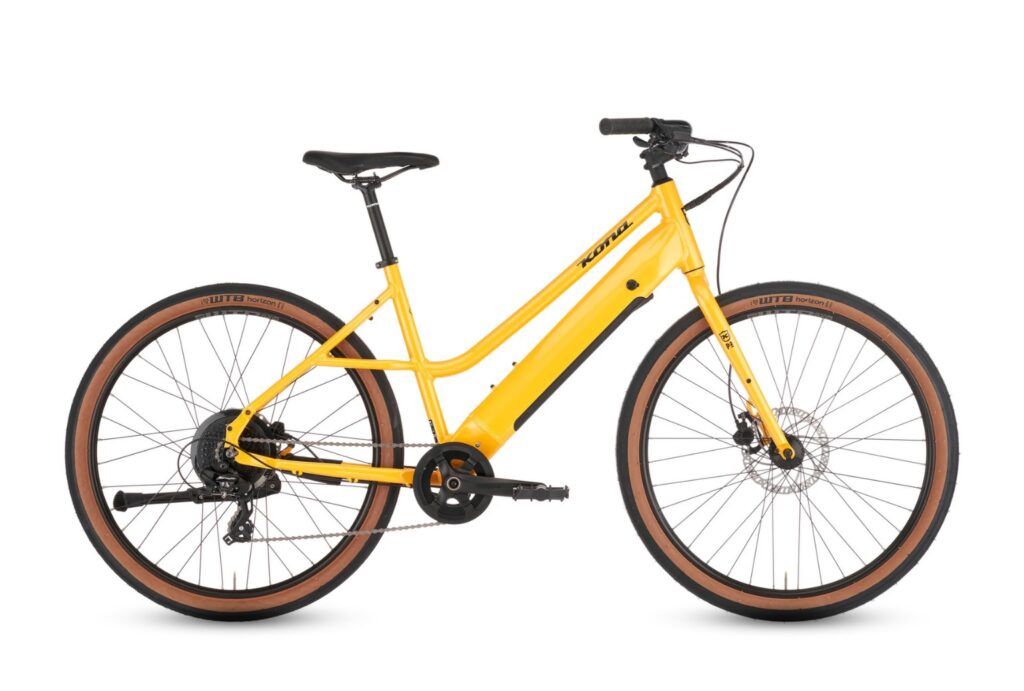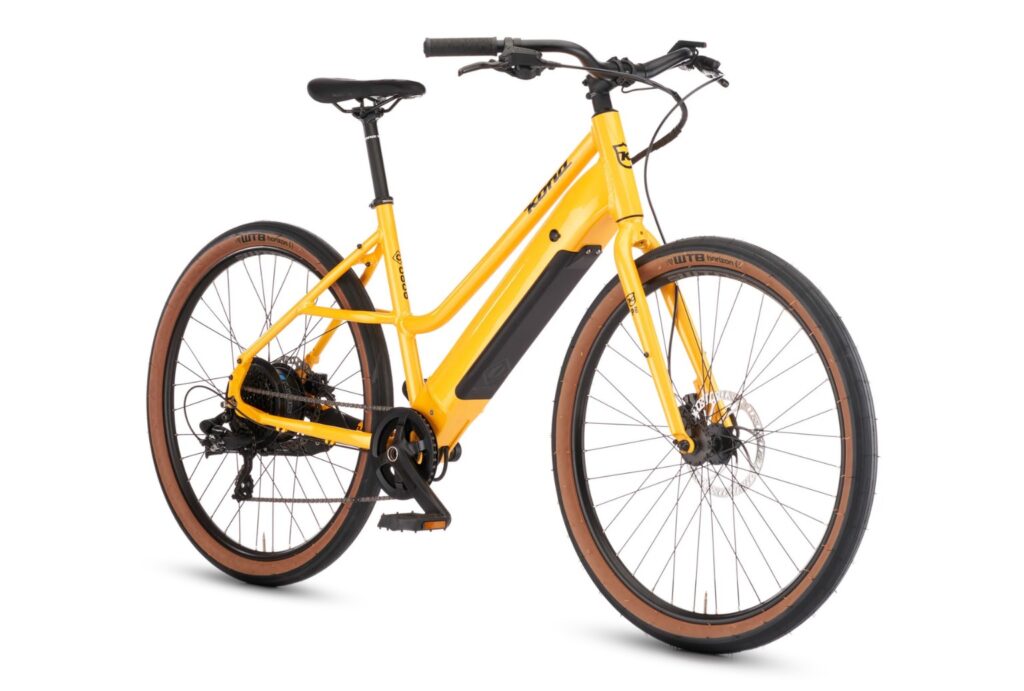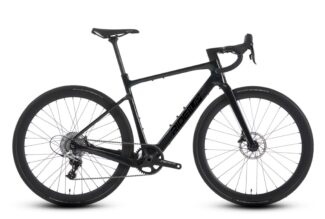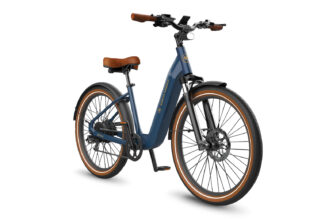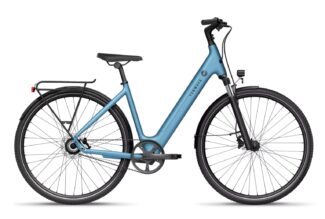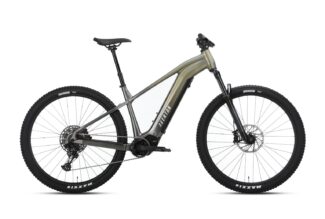Shipping and Assembly
For all you online shoppers, Kona has its full line of electric and conventional bikes available just a few clicks away online. Kona can ship the bike directly to you or one of its many dealers around the world — you decide during checkout. Direct shipping rates will vary depending on your location.
If you get the Coco HD shipped directly to you and have some experience assembling bikes, putting it together is easy. Attach the handlebars, screw in the pedals, pump up the tires, and bolt on the front wheel — then hit the road! It’s about as easy as it gets.
Not an online shopper? Don’t feel comfortable wrenching on a bike? No problem! As I said, Kona bikes are available in bike shops worldwide, so chances are there is one near you. Use the dealer locator to find a shop, then stop by to take it for a spin. You can be riding a Coco HD on the same day!
How the Kona Coco HD Performed
It’s hard not to smile while imagining yourself coasting on this Class 1 beach cruiser down the rural roads of some tropical island. The warm equatorial breeze flows through your hair, the birds chirp, and the faint sound of Jack Johnson plays in the background. Where’s that coming from?
Yes, the Coco HD is perfect for island cruising, but that doesn’t mean you have to live on an island to own one. It fits into the city or countryside and doubles as an electric commuter bike — simply add a couple of racks!
The Frame
Wow — the frame on the Coco HD, right? That vibrant golden yellow colorway, low swooping top tube, and chubby downtube all make quite the statement. The Coco HD stands out and shouts, “Take me for a ride by the beach, brotha.” Throws the shaka.
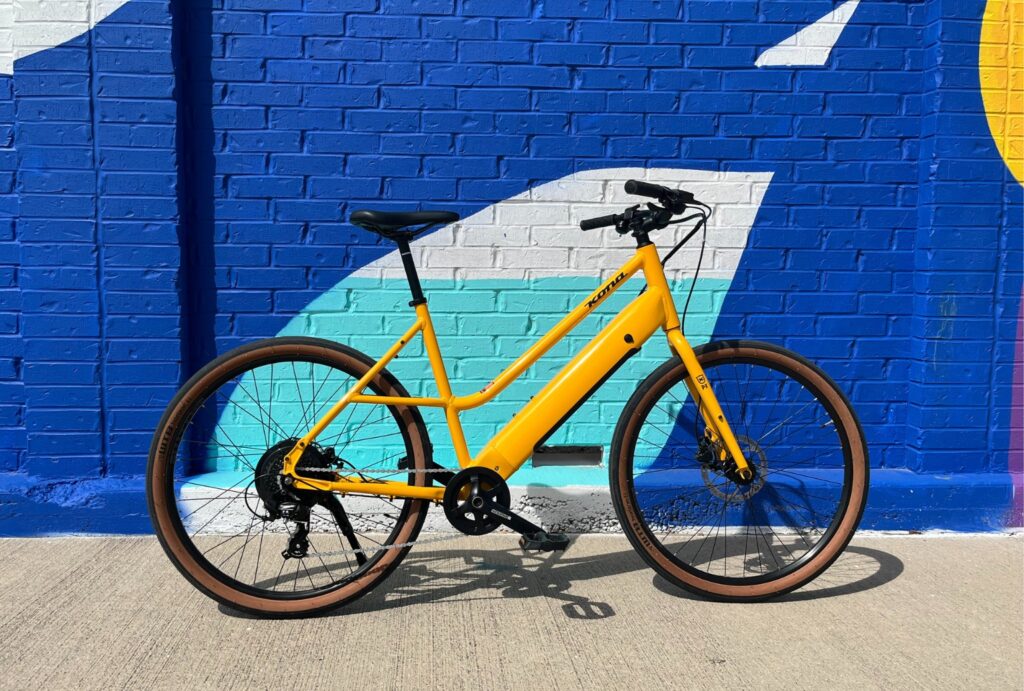
The top tube has a gentle swoop, technically making the Coco a step-through. However, it doesn’t dip as low as most, so some might call it a mid-step. Call it what you want, but that dip in the frame is ideal for riders with mobility issues or who struggle to get their legs up and over crossbars.
The fatter-than-normal downtube is maybe the only part of the Coco HD that signals ‘e-bike’ at a glance. I don’t love how bulky it appears compared to the small tubing used on the rest of the bike. That’s more a matter of personal taste than anything else, though.
The top of the downtube includes two bosses to mount a water bottle cage. However, the space between the topbar and the downtube is especially tight. I don’t see myself mounting a bottle cage there. I’d more likely mount a cup holder to the handlebars on this electric cruiser.
Kona sells the Coco HD in three sizes (small, medium, and large) for riders between 5’0” and 6’2” in height.
Battery
At 6 lbs, the 418 Wh Phylion lithium-ion battery is considered light. It brings the Coco HD’s complete weight to 46 lbs, which is, again, light for an e-bike. Despite its low weight, it has enough juice to fetch about 50 miles on a full charge. I dive deeper into this in the Range Test below.
The removable battery lies in the downtube of the Coco HD, protected from the elements by a black plastic plate mounted to the underside of the frame. Two bolts hold the plastic guard tight and ensure it doesn’t come off while riding.
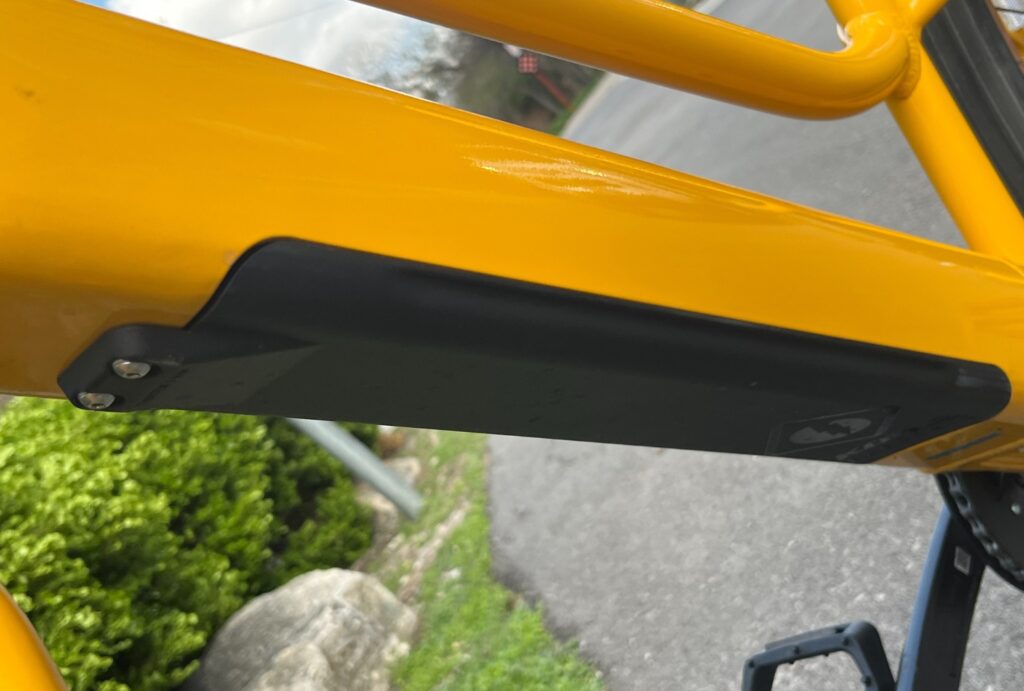
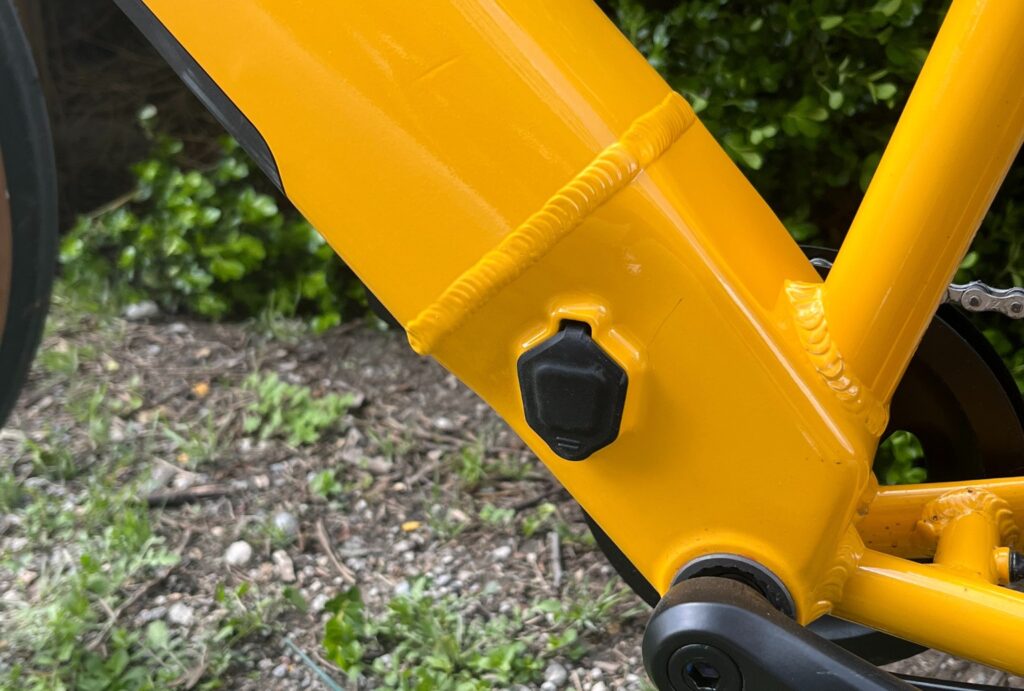
There are two ways to charge the Coco HD:
- Charge it with the battery in the frame by using the in-frame port above the bottom bracket. This is a great option for everyday charging.
- Remove the battery from the frame and plug it directly into the charger. Use this method if you’re storing the bike for a long period in extremely hot or cold conditions or if you don’t have a plug near where you’re storing the bike.
Accessing the plastic plate was awkward, and then attaching and removing it was also cumbersome. The plate sits on the underside of the frame, making the bolts tough to access. On top of that, you need to get an Allen wrench in there to loosen and tighten them. I think this process would get old if I were to remove the battery on a regular basis.
Motor
It’s unavoidable — I’m going to get several cranky emails saying, “250 watts is underpowered. No thanks.” And I get it. There’s a market for juiced-up, moto-style e-bikes. But we’re talking about a Class 1 beach cruiser here. We are out for a casual cruise.

The exceptionally quiet SR Suntour motor and the 8-speed 11-32t Shimano cassette worked in tandem to move me for more than 35 miles of fun. Up hills and on the flats, this little 250 W motor cranks 60 Nm of torque, which is plenty — especially with the range of gears available.
In fact, I rode the Coco HD mostly in Eco mode because anything more than that felt like I was racing — which is not the vibe of the HD. At that power level power, the motor is whisper-quiet and can only be felt, not heard. It’s like riding a conventional bike — only easier!
Handlebars
I’ll be the first to admit it — I’m a sucker for a back-swept handlebar. I like ‘em on almost any bike, electric or not. There’s just something about them that gets me excited to ride!
The Coco HD handlebars are some of my favorites. They keep my hands close to me so I’m not leaning on them too hard. Aggressive riding positions can put unwanted pressure on your wrists and hands, causing numbness or hotspots. Not the case here! The Kona Coco HD definitely has one of the more comfortable handlebar setups.
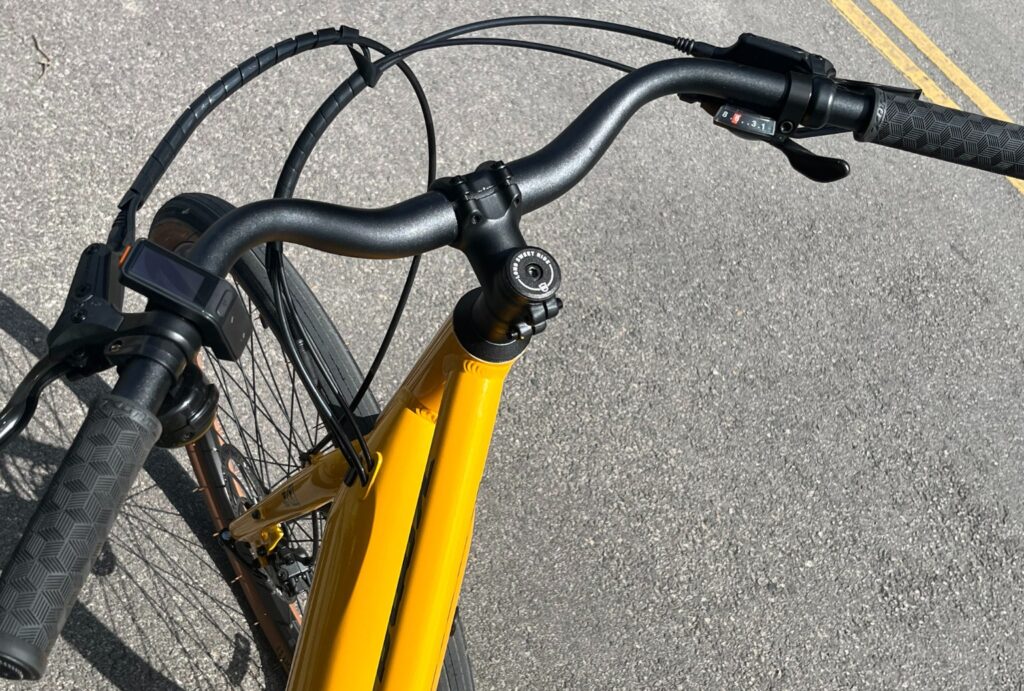
Kona-brand grips bookend the handlebars for a comfortable grasp. You could upgrade them for even more cushy down the road if you are so inclined, but out of the box, they are great.
Controlling the Coco HD is easy with the SR Suntour OLED display located on the left side near the grip. A simple orange button powers the simplistic unit and a mode button labeled ‘M’ cycles through pages of data. The typical data — like odometer, mph, pedal assist level, remaining battery charge, and trip — are all available.
Wheels
Smooth-rolling is the name of the game with these WTB Horizon Comp 27.5”(650b)x47 tires. The slightly larger wheel size lets the Coco HD roll over bumps and cracks more easily than a 26” wheel. And, the flush tread of the Horizon Comp rolls smoothly on the pavement — almost too smooth.
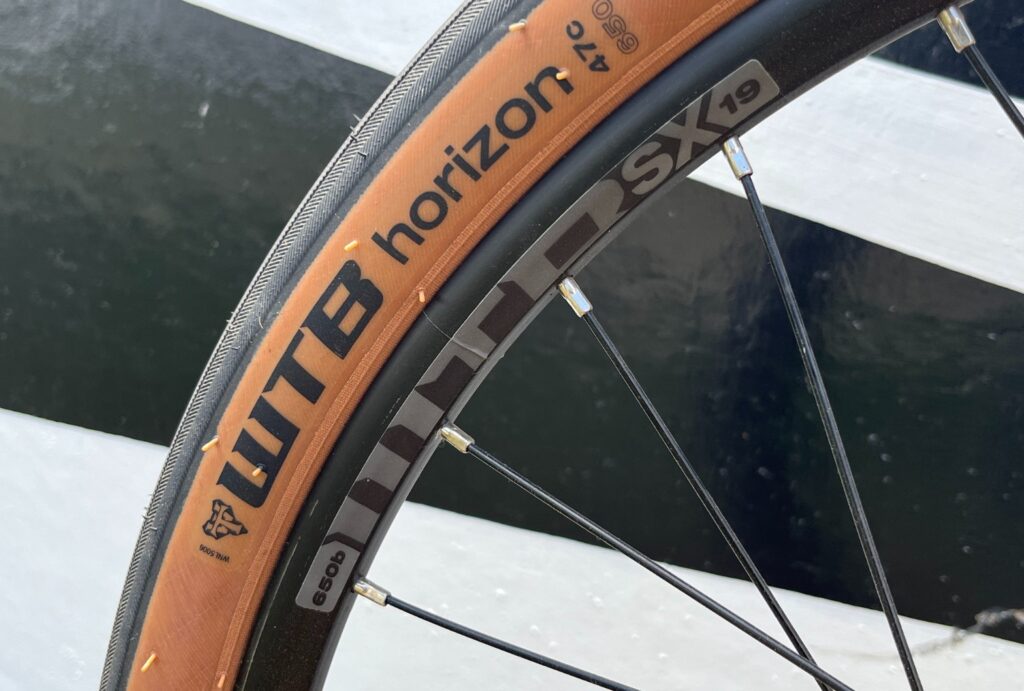
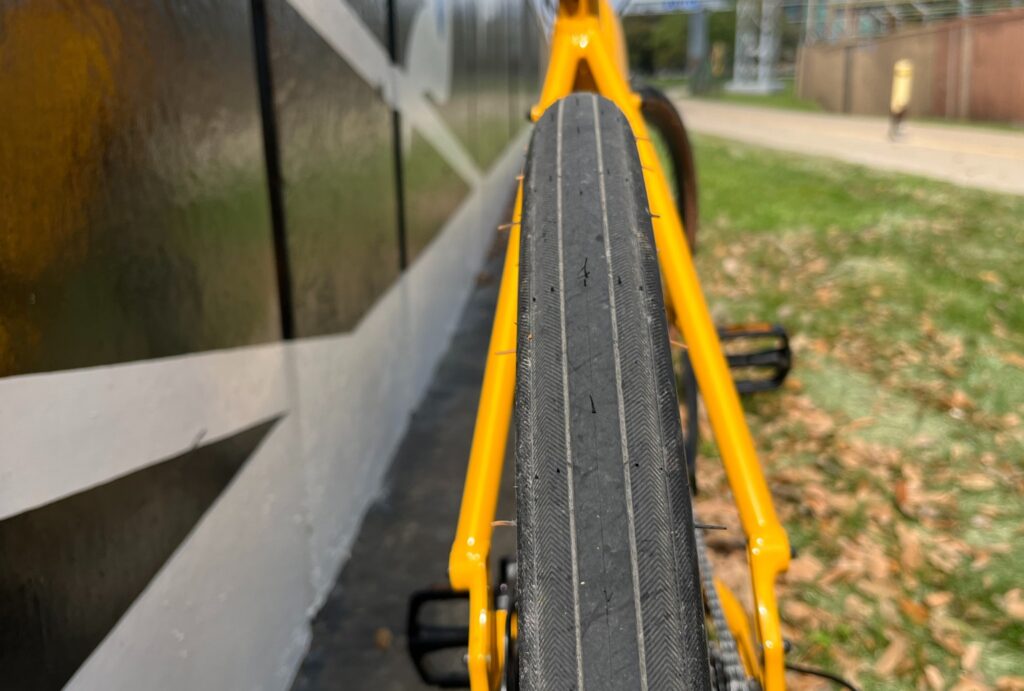
I say that because the center tread pattern is completely flat with very little depth on the outer edges. This setup rolls great on clean pavement. However, the Coco HD is meant to be ridden on the boardwalk or by the beach – so there will be sand.
Good news: The Coco HD is very affordable, which means more money for a new set of tires if you want them. I’d pop for something like the WTB Venture, which gives a little more grip for those loose sand scenarios. That’s just me, though.
Performance: Hill Climb Test
Typically, beach cruisers are made to ride along flat terrain. But Kona built the Coco HD with a drivetrain designed to climb, greatly extending its capabilities. Add on a lightweight 250 W SR Suntour motor, and you’ve got a bike that can crush almost any hill — even the steep ones!
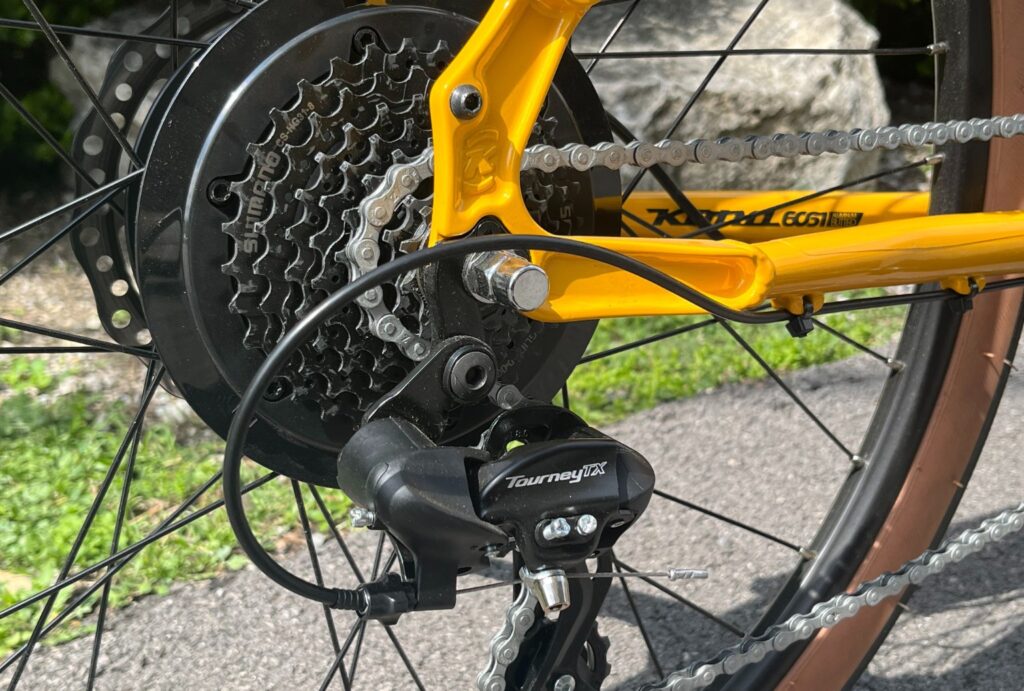
I don’t expect much from most e-bikes when it comes to the hill climb test. Normally, it’s a struggle to make it up the hill on the first pass, which uses no pedal assist. I often find myself standing up out of the saddle and throwing the bike back and forth to make it to the top.
That was not the case with the Coco HD. Its gearing mimics that of a mountain bike and allows me to easily climb my testing hill without any pedal assist. Once I bumped the assist level up to 1 (Eco), I was able to sit comfortably and moderately pedal. Climbing was a breeze — a warm island breeze.
The data below shows that the Coco HD is indeed a beach cruiser designed to climb. This versatility opens it up to use as a casual commuter — something you could ride to work during the week and then use to coast around with friends on the weekend.
| Attempt # | PAS Level | Avg. Speed |
|---|---|---|
| 1 | 0 | 7.4 |
| 2 | 1 (Eco) | 8.8 |
| 3 | 2 (Tour) | 11 |
| 4 | 3 (Normal) | 13.5 |
| 5 | 4 (Boost) | 15.5 |
Performance: Brake Test
What goes up must come down, as the old saying goes. And if you’re going to climb hills with the Coco HD, you’ll need to be in control when you come down. The Tektro hydraulic disc brakes provide just that — confident control.

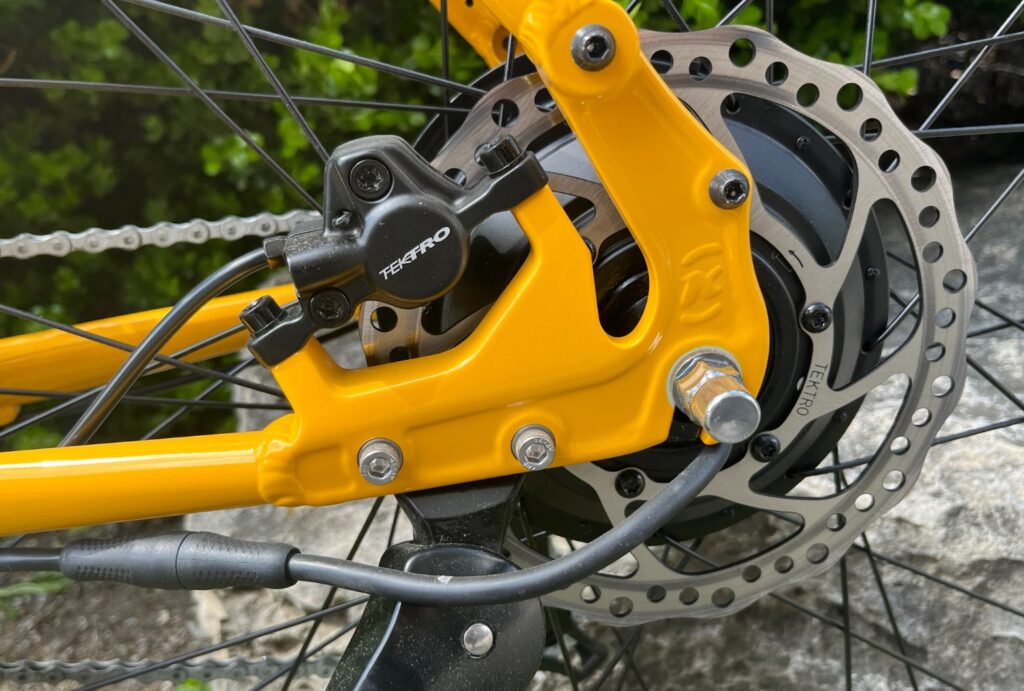
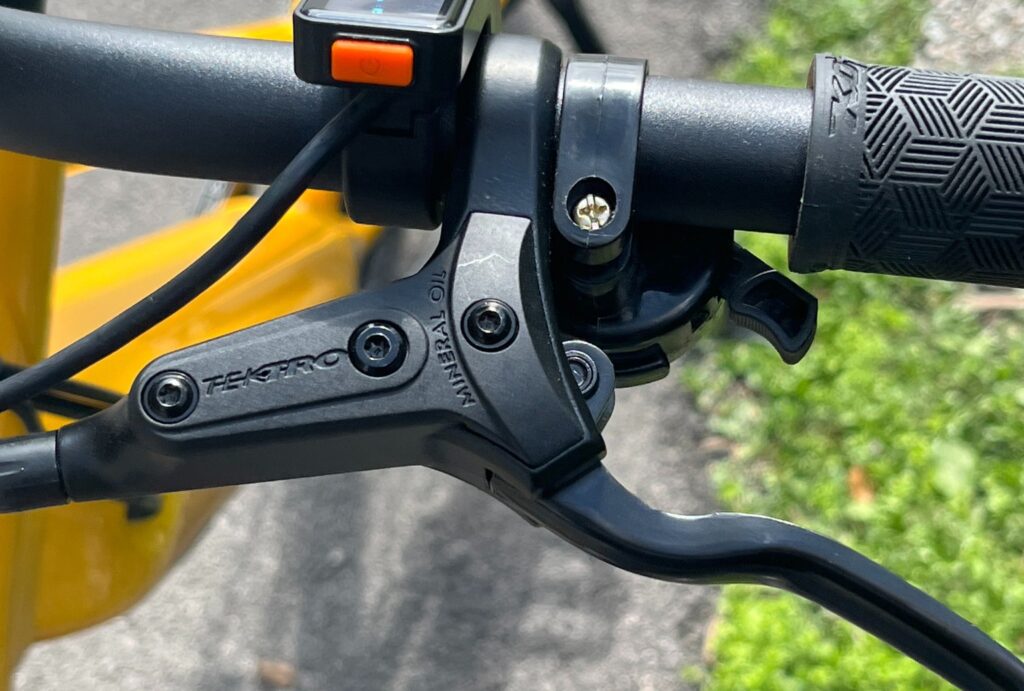

I see these brakes on numerous electric bikes, and I’m always pleased with how they feel and perform. They don’t aggressively bite into the 160 mm rotor; rather, they apply smooth stopping power. You want to stop, but you don’t want to stop suddenly.
The brake tests below show that the Coco HD stops at an average distance of ~21 ft when traveling at its top speed of 20 mph. At that speed, the firm resistance of the brake levers required me to apply strong pressure to even get a skid out of the tires. That’s how smooth these brakes are.
| Attempt # | Stopping Distance |
|---|---|
| 1 | 21.5 ft |
| 2 | 23 ft |
| 3 | 19 ft |
Performance: Range Test
Thanks to its gearing ratio, the Coco HD is easy to pedal. This means the 250 W SR Suntour motor doesn’t have to work as hard, drawing less from the battery and extending its range.
While riding, I found myself mostly using Eco (the lowest pedal assist level) and the middle gears in the 8-speed cassette. This combo resulted in a moderate cruising speed of 15-16 mph and made the most of the 418 Wh battery.
During the range test, I repeatedly check the odometer, charge level, and approximate remaining distance (ARD) on the SR Suntour OLED display. At one point, I traveled 18 miles and used 48% of the battery, leaving me with an ARD of 28 miles. When you do the math on that, it doesn’t seem quite right, does it?
Here’s why the math isn’t mathing. The ARD is the remaining distance based on the current battery charge level and the pedal assist level. The higher the pedal assist level, the lower the ARD. Also, I had performed the hill climb test before the range test and didn’t recharge the battery, so that taxed the motor and battery, shortening my range.
By the end of the day, I had ridden 35 miles and returned home with 20% left of the battery. That gives me an estimated range of ~44 miles. If I hadn’t done the hill climb test, I’m confident I would have reached 50 miles.
Lastly, even if the battery did run out, the Coco HD rides so much like a conventional bike that I could have easily pedaled home. This inspires confidence that I won’t be stranded while out and about.
Things to Consider
The biggest thing to consider about the Coco HD is how you will charge the battery. If you plan to remove the battery to charge it inside, you’ll need an Allen wrench handy to remove the plastic guard protecting the battery. However, the guard lies on the underside of the downtube, which limits visibility. I couldn’t see where the wrench lined up with the bolts, and the whole process was harder than it needed to be.
However, if you plan to charge the Coco HD’s battery while it’s in the frame, you can easily do that using the in-frame port located above the bottom bracket. The small port has a waterproof cover that flips up, letting you plug it in and go.
The last thing to consider with the Coco HD is its tires. If you want to ride on roads with any kind of sand or dirt, consider changing out the tires to something with deeper treads. The slicks on the WTB tires rolled smoothly but were too slick for me. I wouldn’t ride them in any kind of water, sand, or loose dirt on the road.

